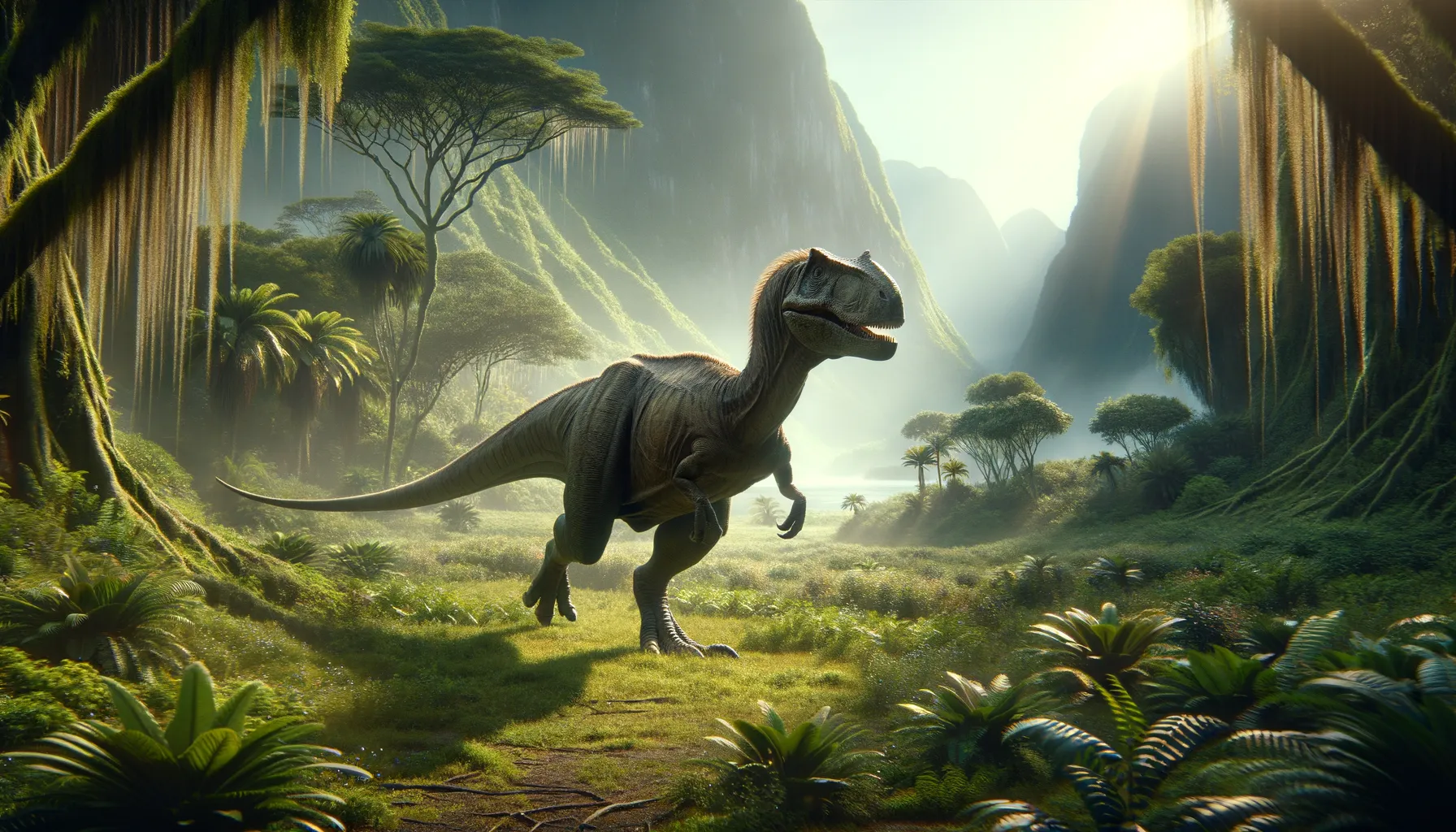
Gyposaurus
Graceful runner of the Jurassic landscape!
Period
Jurassic
Length
Roughly 3 meters in length.
Height
About 1 meter tall.
Weight
Approximately 150 kilograms.
Gyposaurus was a small herbivorous dinosaur that roamed the Earth during the Jurassic period. It had a lightweight body, making it agile and capable of evading predators in its prehistoric environment. Known for its streamlined build and strong legs, this dinosaur thrived in various habitats, from dense forests to open plains. Its fossils, primarily found in China, provide valuable insights into the rich ecosystem of the Jurassic era.
Diet
Gyposaurus was an herbivore, primarily feeding on the foliage of ferns and cycads. It likely used its beak to nip at plants and its long neck to reach vegetation in higher areas.
Hunting
As a plant-eater, Gyposaurus did not hunt but rather foraged for its food. It may have traveled in herds to increase foraging efficiency and provide protection from carnivorous predators.
Environmental challenges
Gyposaurus faced the threat of large predators that coexisted in its ecosystem. It likely needed to be vigilant and rely on its speed to escape danger. Climatic changes during the Jurassic period might have influenced plant availability, impacting its feeding patterns. Periodic environmental shifts required it to adapt to changes in habitat and food sources.
Speed
Medium speed, able to outrun slow predators.
Lifespan
Estimated to live up to 20 years.
First discovery
First discovered in the early 20th century in China.
Fun Facts
- Gyposaurus is a lesser-known dinosaur, often overshadowed by more famous relatives like Tyrannosaurus rex.
- It was a herbivore, meaning it primarily ate plants during its lifetime.
- Gyposaurus lived during the Late Jurassic period, which was several million years ago.
- This dinosaur is believed to have been a relatively small creature compared to other dinosaurs, likely standing no taller than a human adult.
- Fossils of Gyposaurus have been primarily found in China, giving insight into the environment it lived in.
- Despite its name, Gyposaurus is not related to 'gypsies'; the name comes from Greek words meaning 'curved lizard.'
- The exact classification of Gyposaurus is still debated among scientists, reflecting the ongoing nature of paleontological research.
Growth and Development
Gyposaurus underwent significant changes from hatchling to adult, growing quickly in its early years to avoid predation. Its growth rate may have slowed as it reached maturity, allowing it to allocate more energy to reproduction. The development of its legs and agility would have been crucial for survival.
Habitat
Gyposaurus inhabited forested and open environments, utilizing its agility to navigate through dense vegetation. It preferred areas with abundant plant life, critical for its survival as a herbivore. Seasonal changes in food availability likely influenced its movement and habitat range.
Interaction with other species
Gyposaurus likely lived alongside other herbivores, possibly forming mixed-species groups for safety. Predatory dinosaurs posed significant threats, with Gyposaurus needing to be constantly alert. It may have engaged in symbiotic relationships with smaller, non-threatening species.
Natural lifespan
Gyposaurus could naturally live up to 20 years in a stable environment.
Reproduction
Gyposaurus likely laid eggs, with nests built in hidden or protected areas to avoid predators. Parental care might have been limited, with hatchlings relying on rapid growth to increase survival chances. Breeding seasons were possibly aligned with periods of abundant vegetation.
Social behaviour
Gyposaurus may have formed small herds or groups for protection and efficient foraging. Social interactions would include communication through vocalizations or visual signals to alert others of danger. It might have exhibited basic social structures to coordinate group movement and grazing.
Fossil locations
Fossils of Gyposaurus have primarily been found in China, providing important clues to its environmental preferences and physical characteristics. These findings are crucial for understanding the broader ecosystem of the Jurassic period. Paleontologists continue to uncover more areas potentially inhabited by this dinosaur through ongoing excavations.
